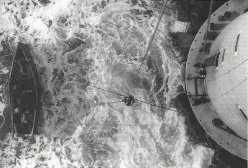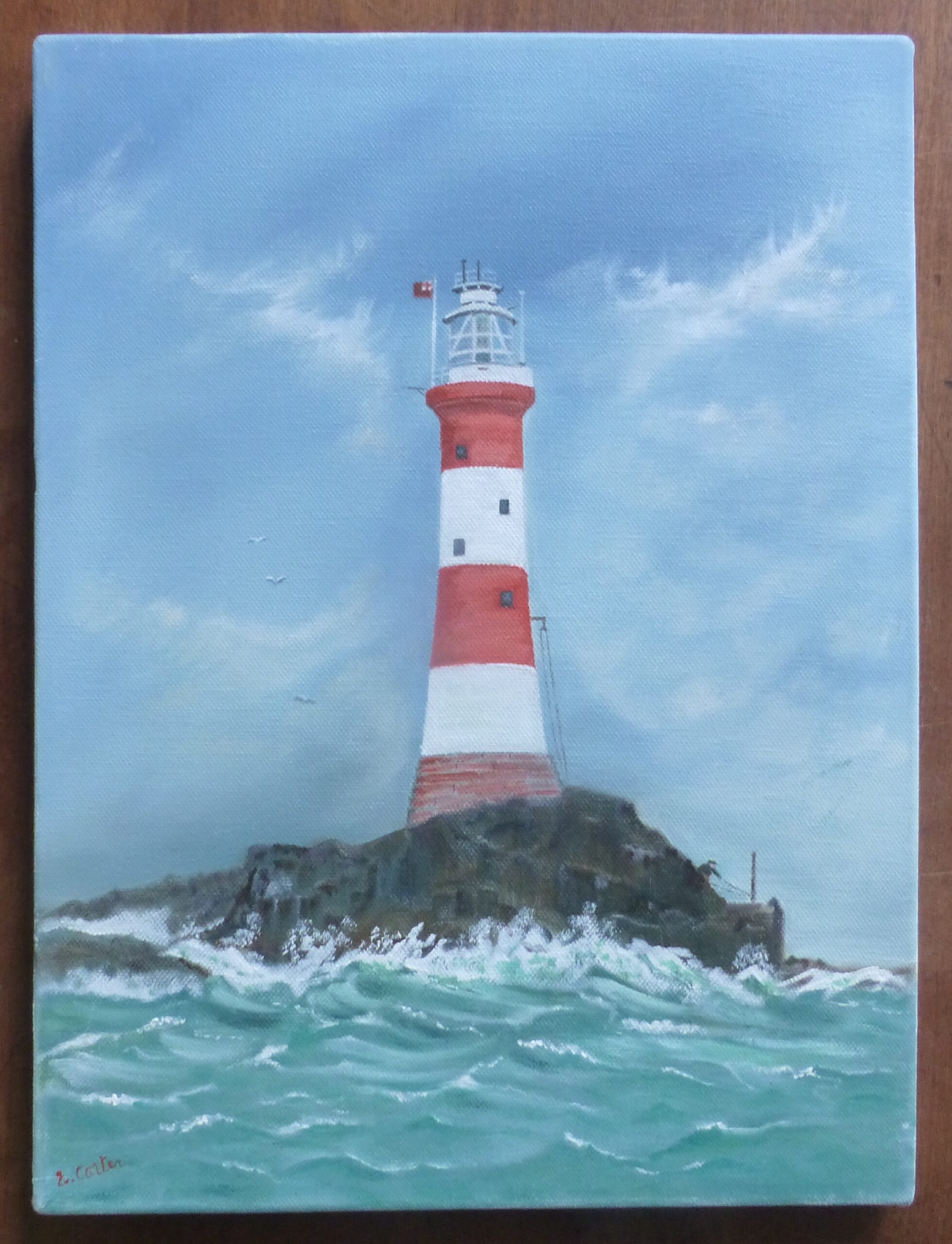A rope was thrown from the tower and attached to the bow bollard of the launch, from the rope hung a loop, just large enough for me to place my foot in. I was then instructed to lie back, catch hold of the rope with both hands and then slowly, inch by inch, I found myself being winched over the sea and up to the tower. I was instructed not to look down but remember doing so nearly dying with fright at the maelstrom of white water below me: one slip with the hand and it would have been curtains. It seemed like hours before I was dragged by the scruff of the neck and hauled into the doorway. I shook like the proverbial jelly. By now heavy seas were crashing around the rocks, the wind had veered to the south and increasing, there was still oil and stores to be landed. Fortunately, all this went well and in just over the hour we were waving goodbye to the crew of the tug and the keeper, who was going ashore, for his one month leave. The tug gave us a blast on the siren and disappeared into the gathering gloom. A sudden feeling of despair overwhelmed me, as I contemplated having to spend eight weeks with two complete strangers and fourteen miles from land. I was shaken out of my reverie by the principle keeper “come on lad, work to be done. There are stores to be unloaded and a meal to be cooked but first I’ll show you over the premises.”
Spiral granite steps wended ever upward to the tiny circular kitchen with not enough room to swing a cat. Golly, my legs were tiring already. A few more steps brought us to the sleeping quarters. Three bunks, one above the other, were arranged in a semi-circle around the room, the shape of a banana. Next stop the service room, where a powerful radio telephone was installed and where watchkeeping was maintained. Just above this room, the massive lens which reflects and magnifies the light was turning. It was lighting-up time. There was no electricity in those days, the light being akin to a giant tilly lamp with mantle and fed by paraffin from tanks at the bottom of the tower and pumped up by hand. The massive revolving lens had to be wound up several times during the watch. But as well as the light, explosive signals were set off at five minute intervals during fog. This was an arduous task. Giant arms which held the explosives were positioned outside on the gallery which meant running outside every ten minutes, loading the explosives and winding the arms high above the lantern and then back inside to press the plunger at the correct time. This could go on for many hours, as it did when I was on the smalls lighthouse twenty three miles out in the Irish sea, when it lasted for ninety three hours and almost drove us balmy.
by Edwin Carter




